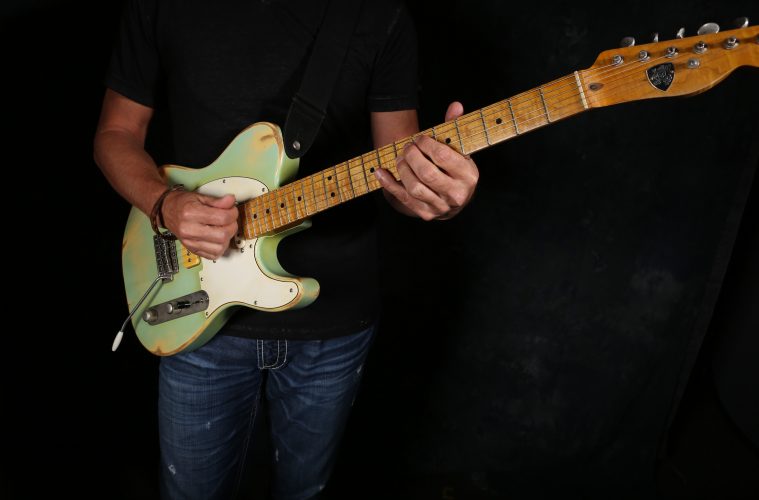I play approximately 200 solo performer gigs a year with an acoustic/ electric guitar, percussion loops, vocals and a looper. Physically it’s a challenge to play 3 hours a night and improvise over the loops on an acoustic guitar, so, I found myself developing my guitar playing style for those live shows to incorporate more double stops.
The double stops give me a range of melodic options that are full, harmonically rich and can be repeated as motifs when I improvise. This approach gives me an identifiable sound that is much fuller than single note options and takes a lot less physical energy when improvising.
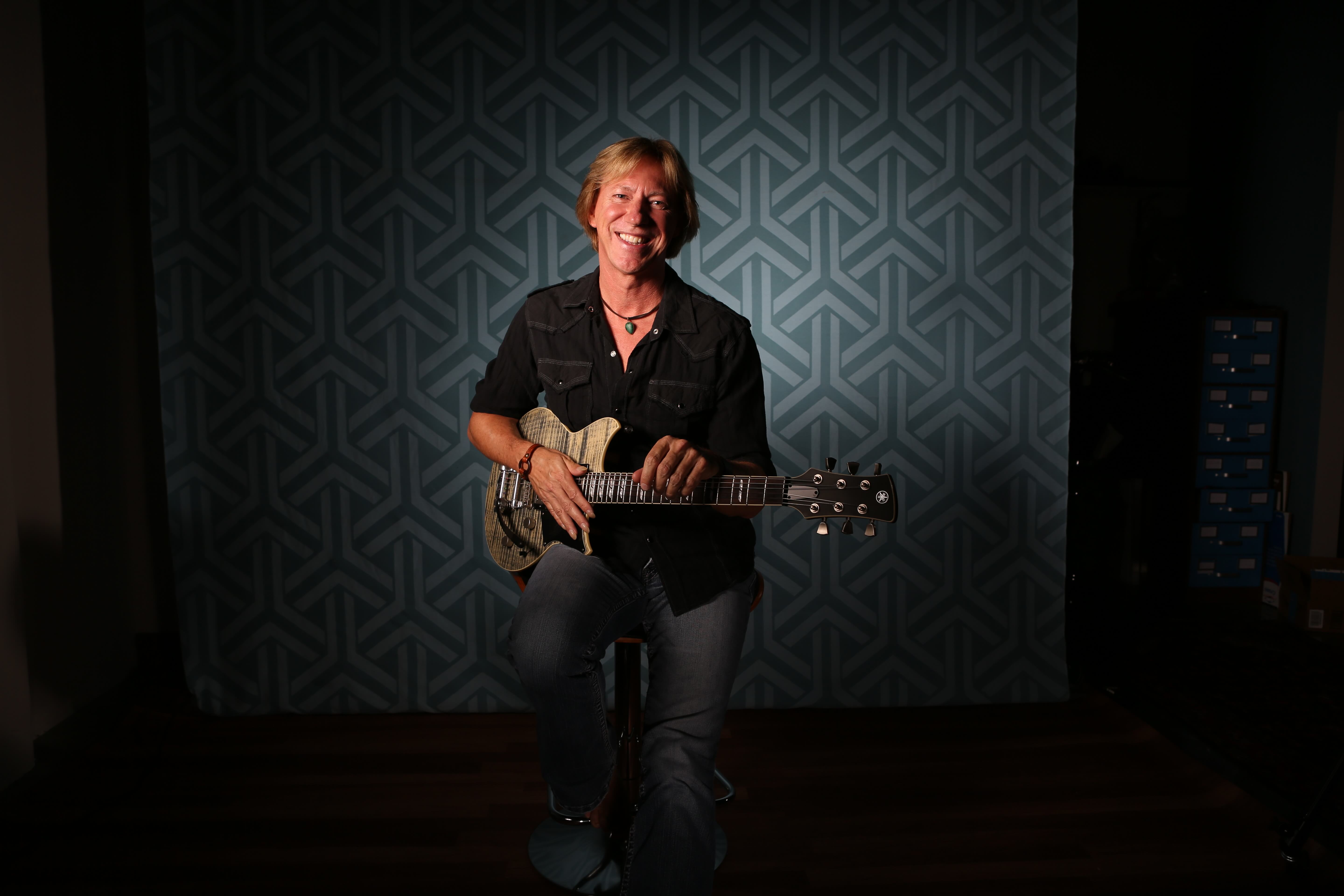 Double-stop Major and Minor 3rds, Major and Minor 6ths, Perfect 4ths and Octaves are the most typical intervals that you’ll hear in modern music. Phrasing, tonal properties and techniques are then applied to create genre specific results. The Major Scale is used to build chords by stacking major and minor
Double-stop Major and Minor 3rds, Major and Minor 6ths, Perfect 4ths and Octaves are the most typical intervals that you’ll hear in modern music. Phrasing, tonal properties and techniques are then applied to create genre specific results. The Major Scale is used to build chords by stacking major and minor
3rds. The result is a set of seven chords built from the root note of each of the 7 major scale tones – the Harmonized Major Scale. We can also build each of the aforementioned double-stop intervals based on the Major Scale. In my TrueFire course Double-Stop Chops I go into full detail on how to locate each of the double stop intervals in relation to the Major Scale / Harmonized Scale and lay them out visually as diagrams across the fretboard and along the length of the strings.
Double stops can also be considered chord fragments, which make them ideal to outline chord progressions and create solid consonant hooks and riffs. Two note chords are also referred to as dyads, however those are typically root and fifth power chord ideas that are played as a solid unit. However, in theory, double stops could also be considered dyads and you would be correct if you referred to them that way.
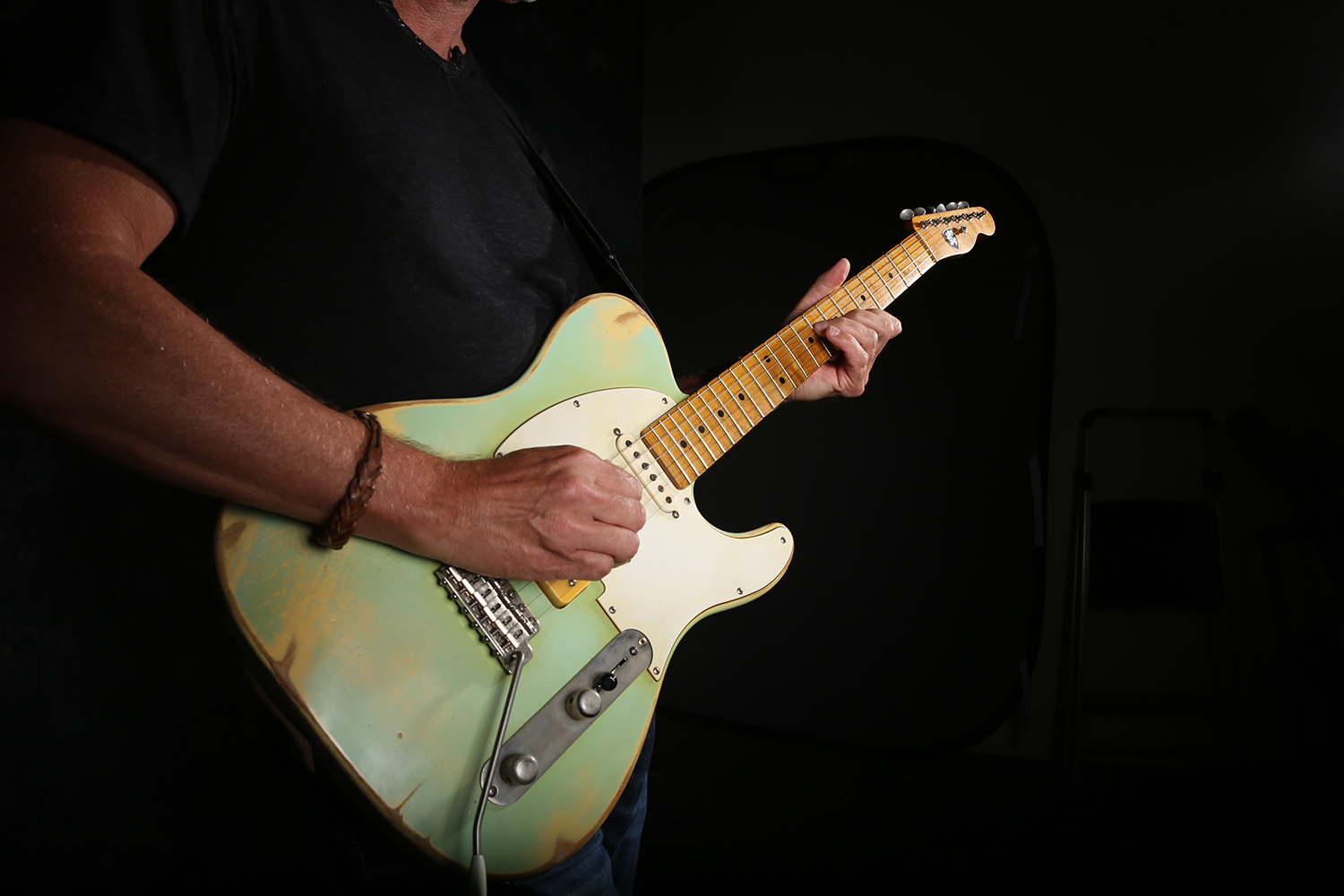 In this lesson, I would like to give you another approach to locating double-stop shapes and ideas based around your chord shapes and chord tones – in effect, double-stop “sweet notes.” I strongly believe that having a strong visual sense of shapes within shapes (double-stop shapes within chord shapes) will help you create lines and motifs that you can transpose to other keys. You will also have a keen sense of the chord tone resolution points, as you’ll be able to see those shapes within the chord shape itself.
In this lesson, I would like to give you another approach to locating double-stop shapes and ideas based around your chord shapes and chord tones – in effect, double-stop “sweet notes.” I strongly believe that having a strong visual sense of shapes within shapes (double-stop shapes within chord shapes) will help you create lines and motifs that you can transpose to other keys. You will also have a keen sense of the chord tone resolution points, as you’ll be able to see those shapes within the chord shape itself.
Double-stop shapes occur on adjacent strings in the case of Minor/Major 3rds, Fourths etc, (or with a string between them in the case of Major/Minor 6ths and Octaves). It is possible to articulate double-stop ideas using a pick but I strongly advocate using your thumb and first or second finger because you’ll be able to attack both strings at the same time without having to worry about the string in between the double-stop shapes. I also think you have a better chance of controlling the dynamic expression of each individual tone. For example, you may want the lower voice in the double stop to be softer than the upper voicing or may want one note to decay or mute before the other.
Let’s take a look at the first fretboard diagram of an A7 chord and visually dissect the chord into double-stop chord fragments.
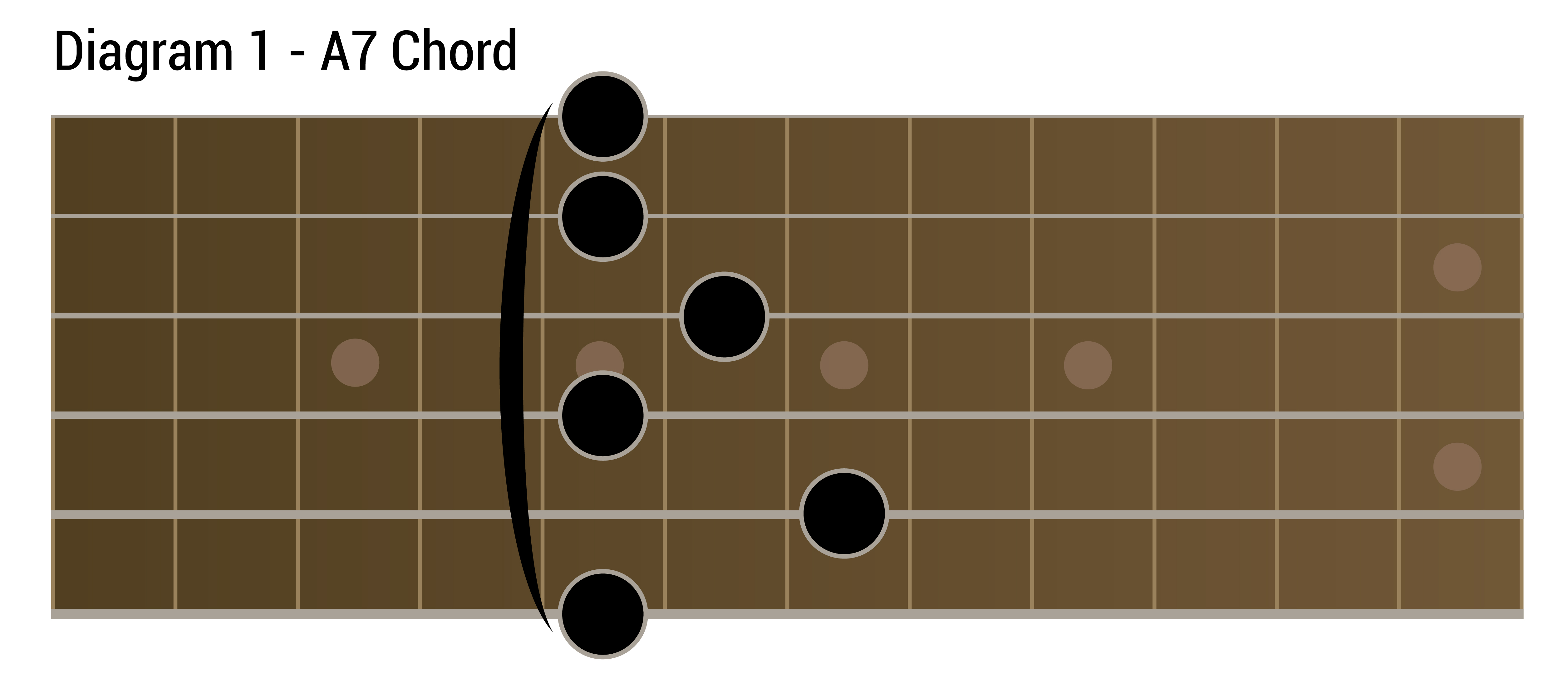
Diagram 1 – This is a typical A7 chord shape at the 5th fret (if you’d like to name the notes in the chord).
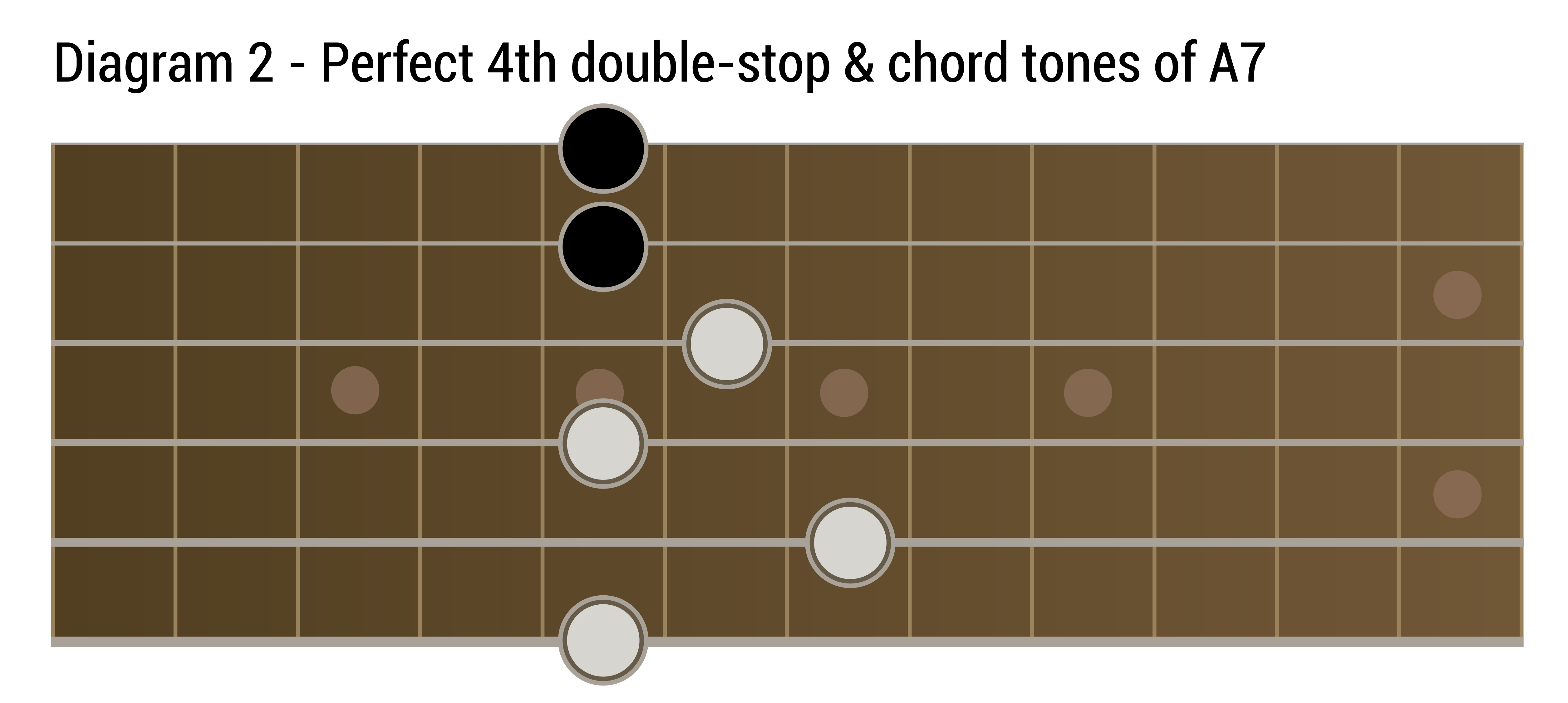
Diagram 2 – The top 2 notes of the A7 chord constitute a perfect fourth double stop. Play the lower note E with your thumb and the upper note, A with your first or second finger. Try playing them together and then alternated between the two notes to get the sound in your head…visualize the shape within the chord.
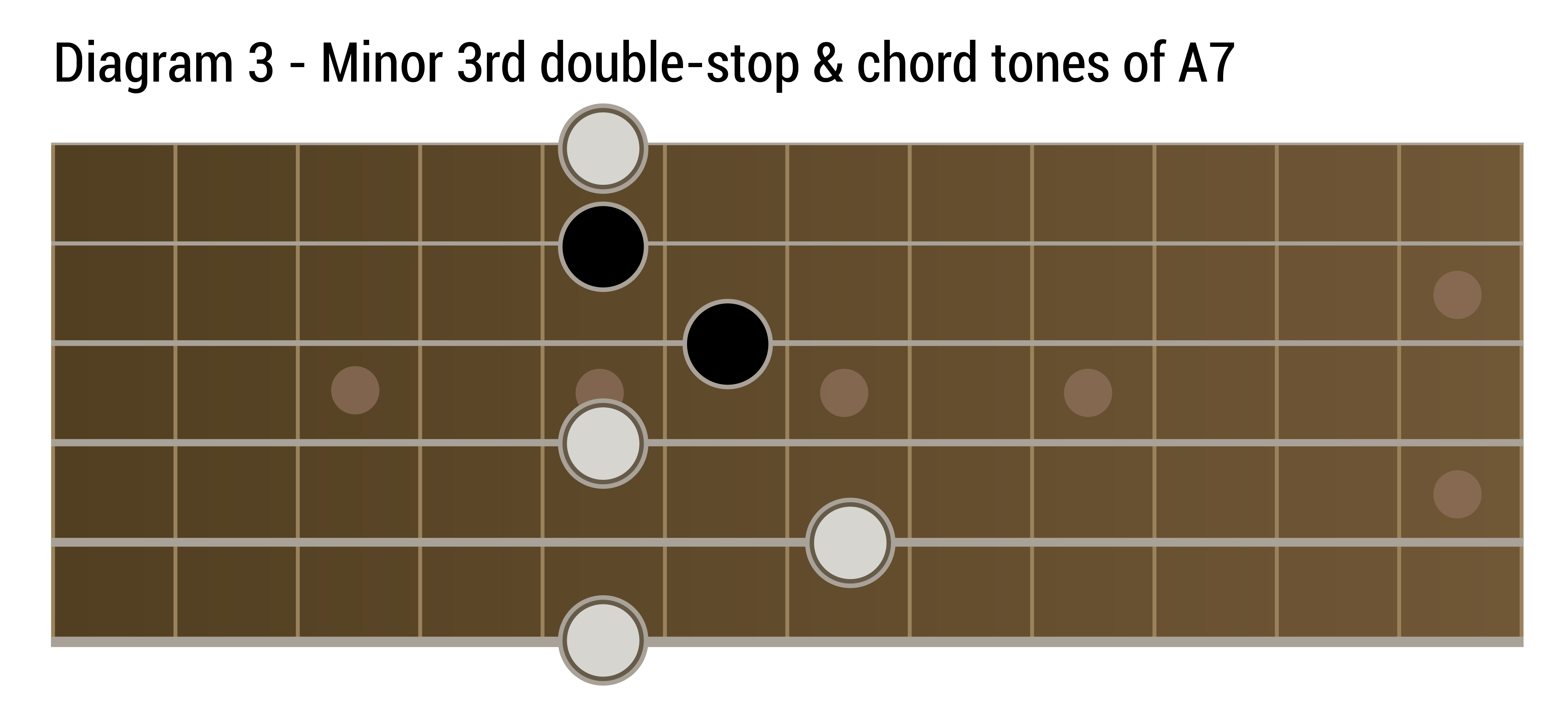
Diagram 3 – This shape is a Minor 3rd double-stop interval. Play the 2 notes together and hear the sound. Now, use your thumb and fingers to articulate the 2 notes. The lower note is C# and the upper note on the second string is E. Try sliding into the shape from one fret below.
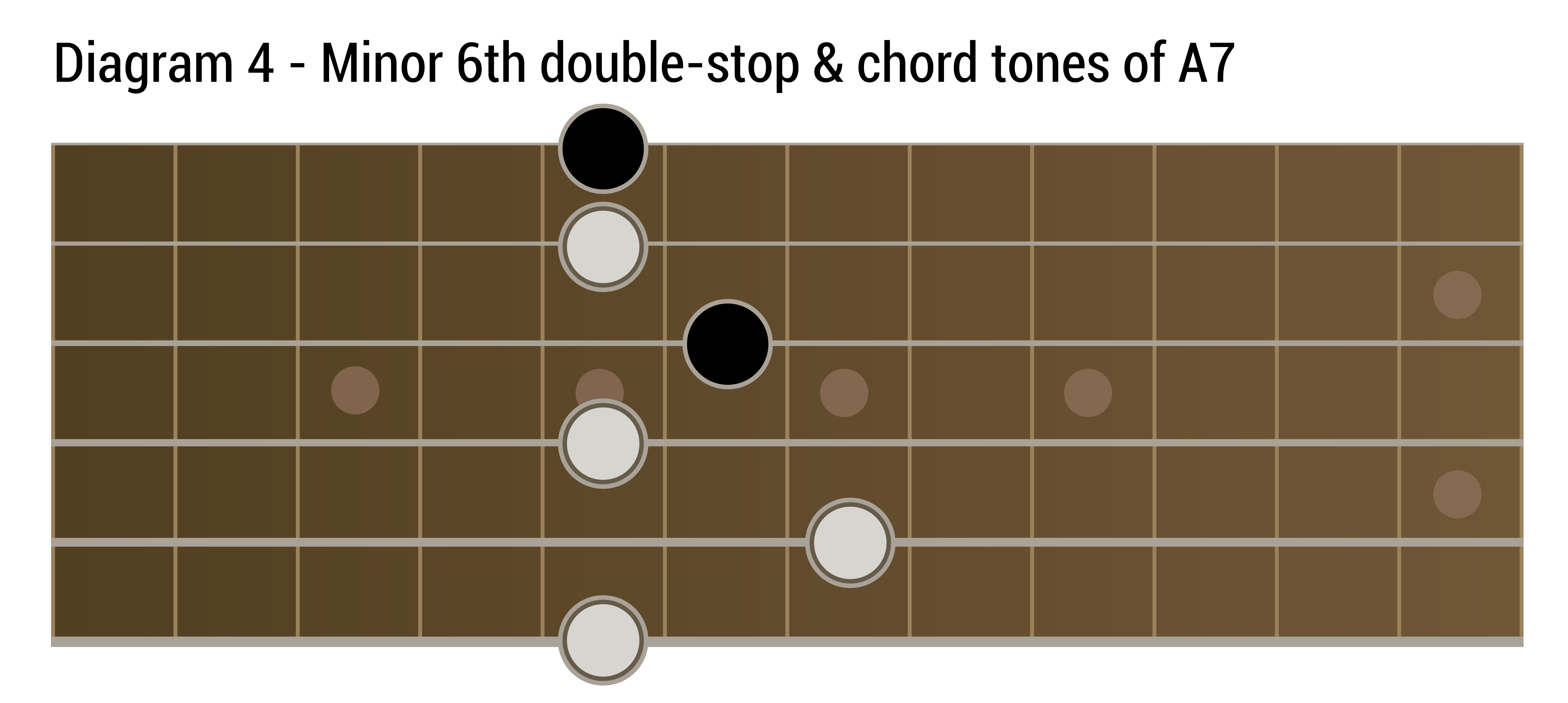
Diagram 4 – This shape is a Minor 6th double-stop interval. This is a very popular sound you’ve heard a million times and will be a “go to” shape for most guitarists. Play the tones together and then separate the tones by picking them one at a time and let the notes ring together. Try sliding into the lower note, C# from one fret below…let the note ring and then pick the upper note, A. Let both notes sustain and ring together.
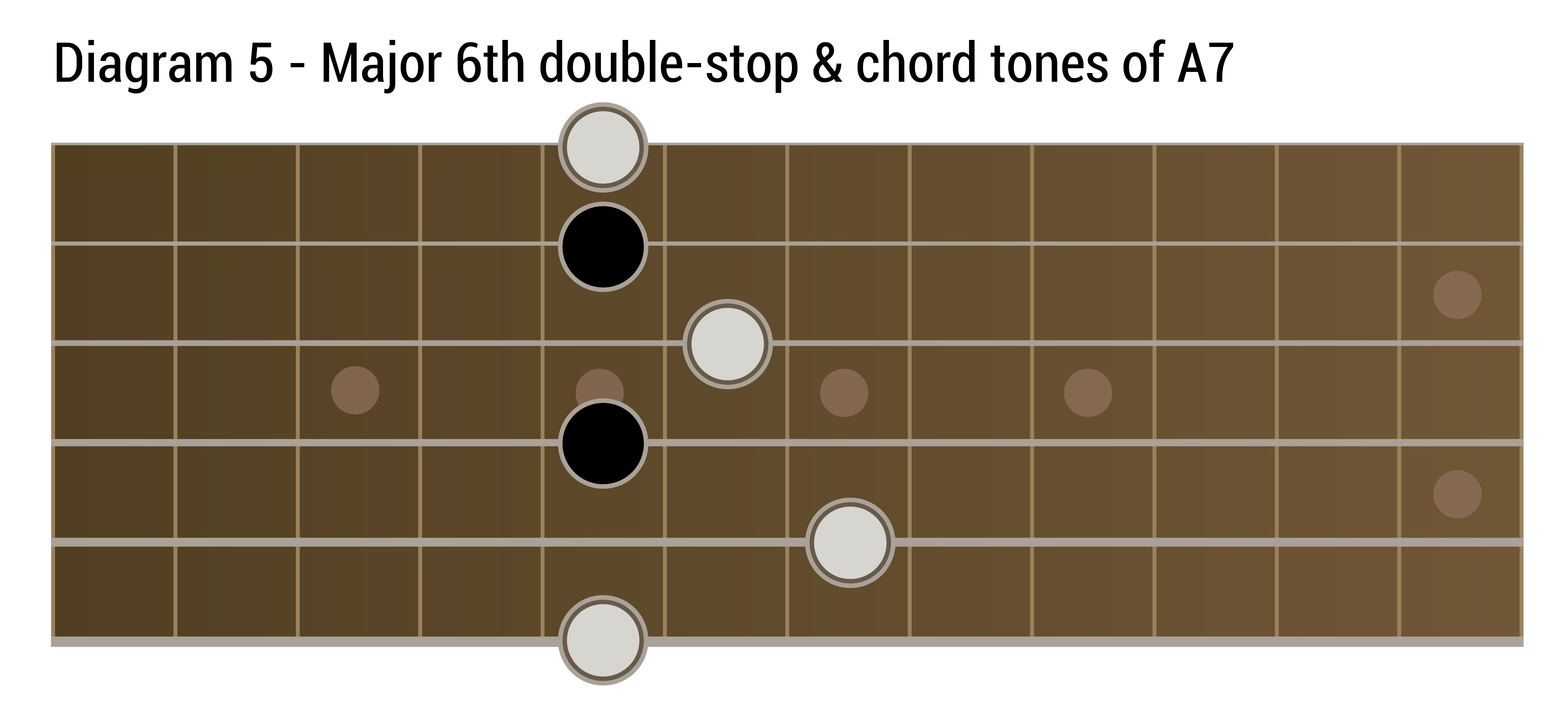
Diagram 5 – This is a double-stop Major 6ths interval and will be a very popular shape within your A7 shape. Articulate the tone at the same time and then play them separately…try sliding into the shape from two frets above (7th fret position).
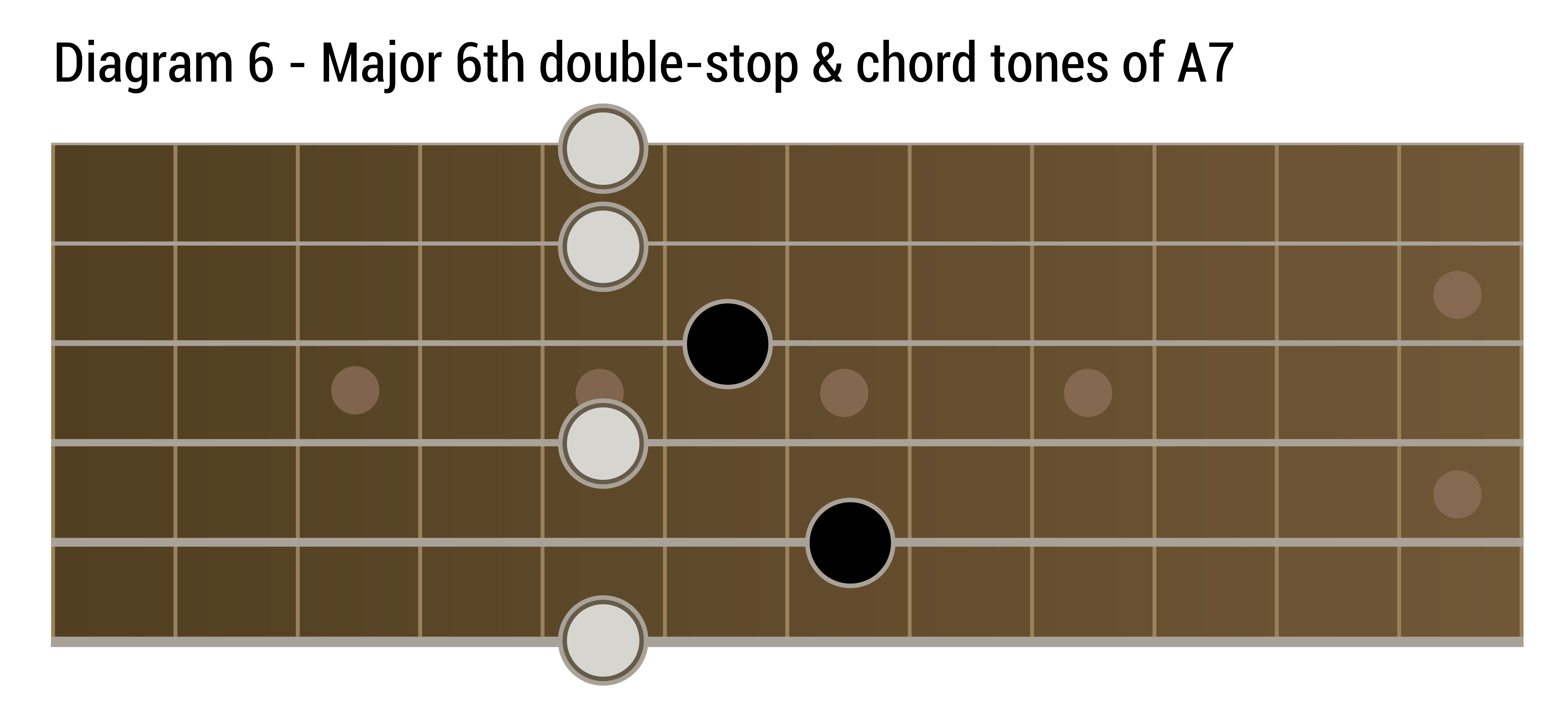
Diagram 6 – This is a Major 6th double-stop interval. Experiment with how you articulate the notes, visualize the shape and them try sliding into the shape in a variety of different ways…experiment and use your ears to see what works best. As you can probably see, there are other double-stop shapes and opportunities within the chord shape but these will be dissonant in tonality and we want to focus on the ones that produce sweet consonant resolutions.
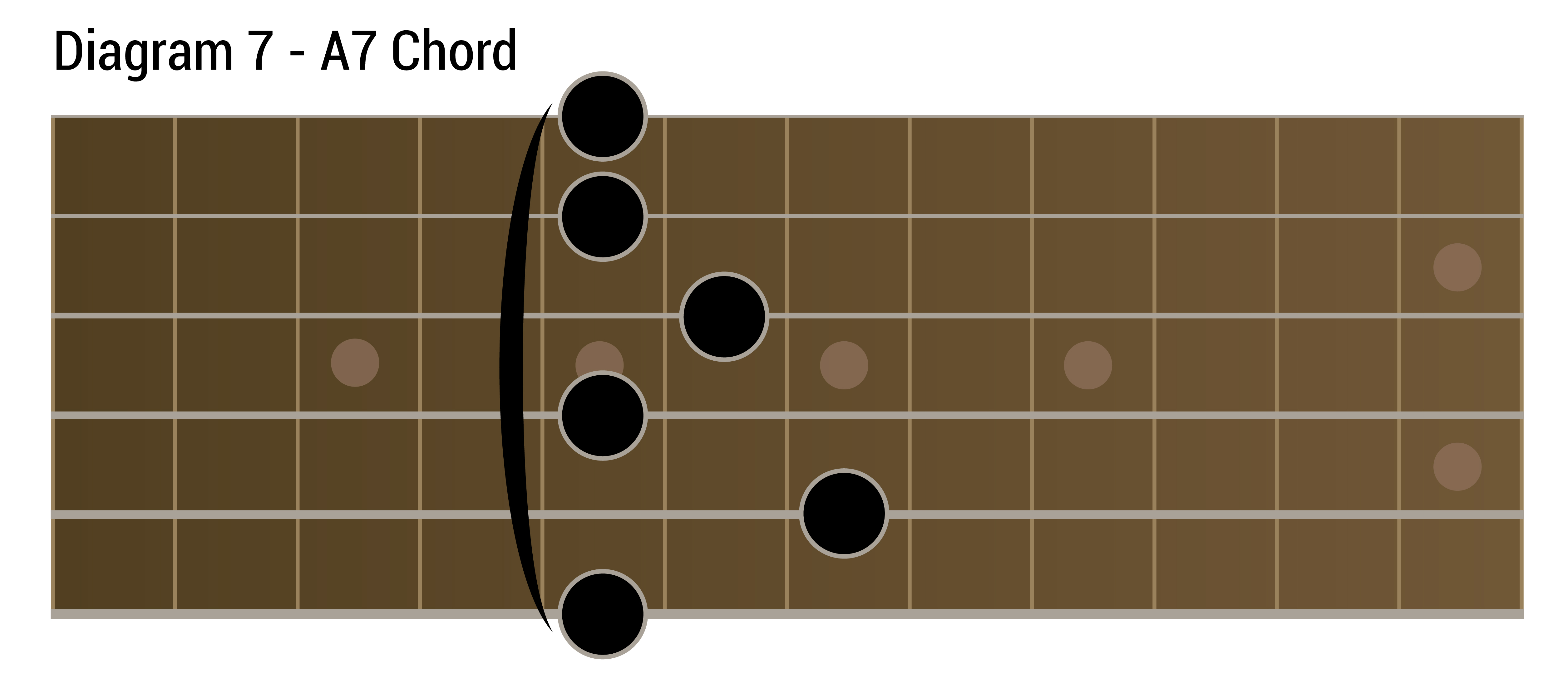
Diagram 7 – Re-reference the A7 chord. Play each of the individual chord fragments over the A7 chord shape and re-reference the chord.
Let’s take a look at some nice glissando and slides into some typical double-stop shapes over the A7 chord.
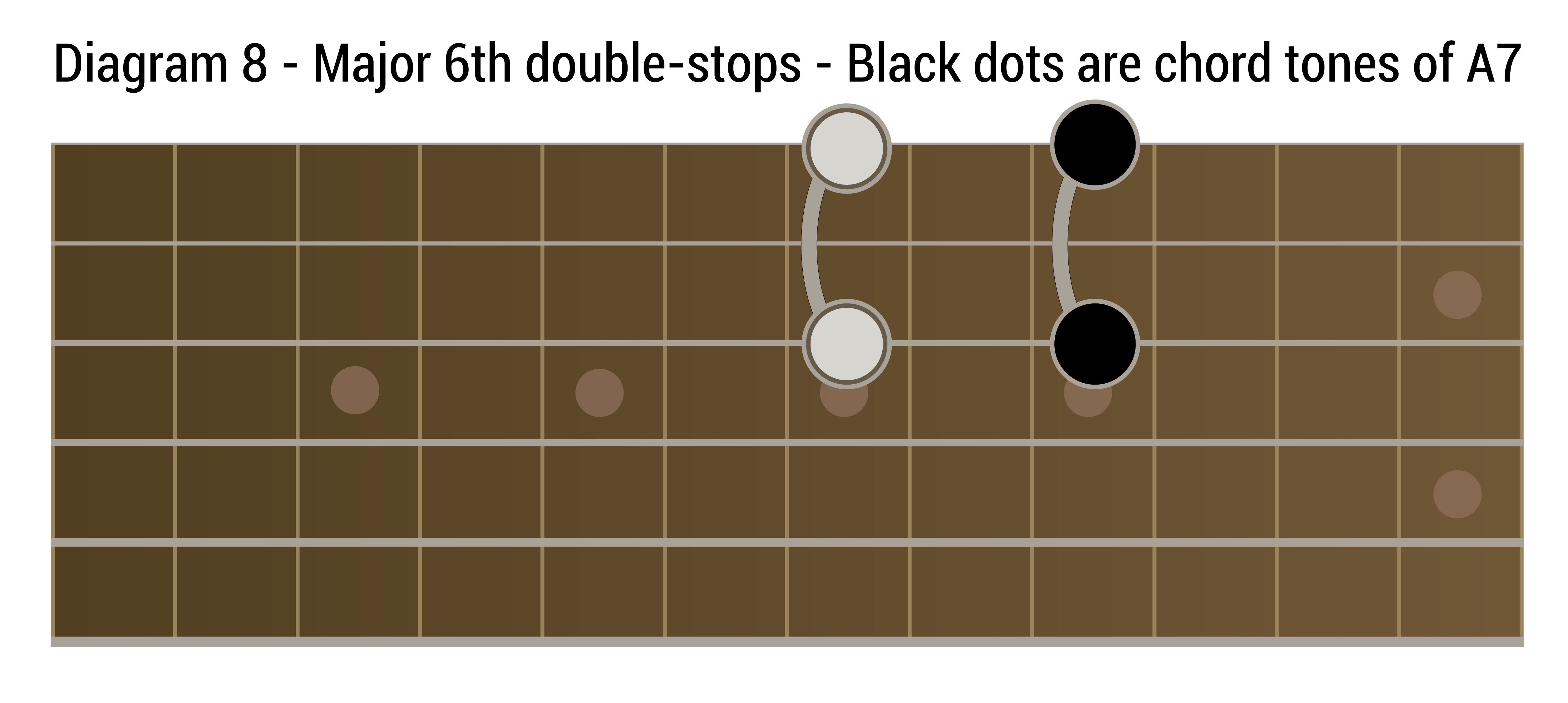
Diagram 8 – This is a nice double-stop Major 6th move. Form the shape on the fretboard at the 7th fret (open dots) using your 2nd finger for the lower note and your 3rd finger for the upper note. Pick the low open dot and slide up to the 9th fret black dot…pick the upper black dot and slide the two notes back down to the 7th fret. Play this in time as 8th notes. Make this move really nice and smooth and let the notes ring together once you’ve picked them both at the 9th fret. This a cool move but isn’t resolute…if you want it to resolve slide up to the 9th fret as the E and C# notes (black dots are chord tones of A7.
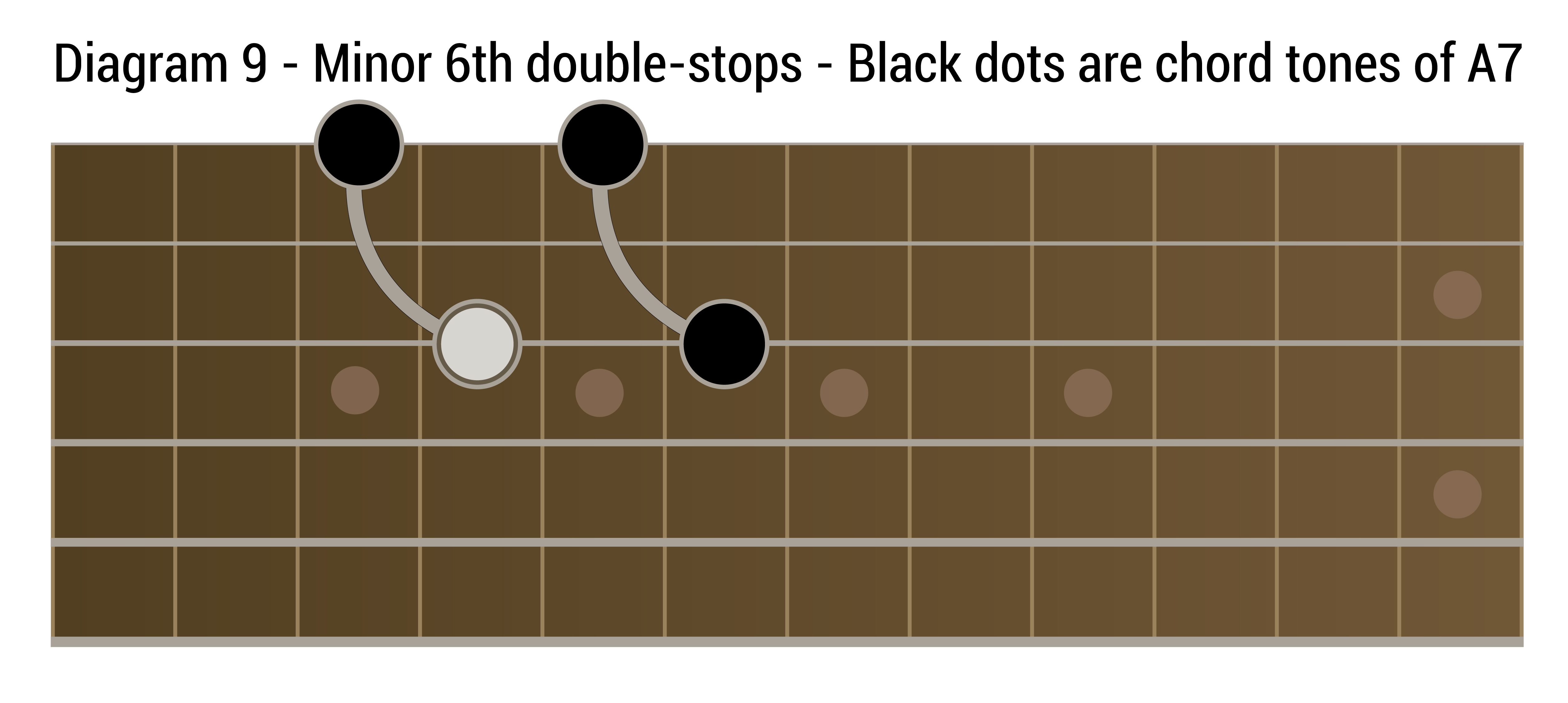
Diagram 9 – These are double-stop Minor 6th interval shapes. Form the shape on the fretboard using your second finger for the lower note and first finger for the upper note. Pick the lower open dot and slide up to the 6th fret black dot on the same string…pick the upper note and slide both tones back down to the original position. Make sure the 2 notes are ringing together. This is a super cool sound over the A7. Partially resolved to the b7 (G) and partially unresolved on the 9 (B). If you’d like this to be fully resolute slide up to where I’ve indicated the 2 black dots…these are chord tones of A7.
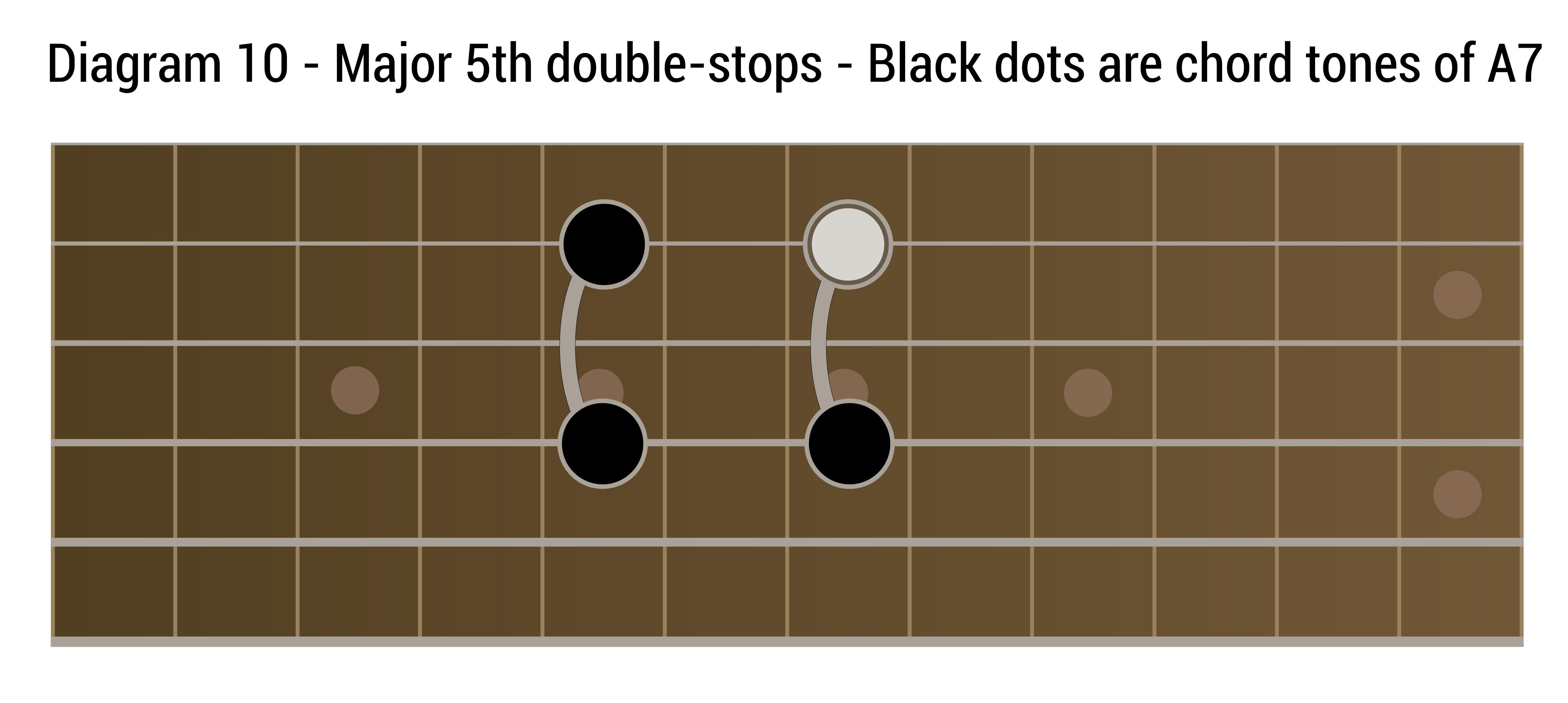
Diagram 10 – These shapes are double-stop Major 6ths. You know the drill by now…form the shape using 2nd and 3rd fingers…pick the lowest note first…slide up 2 frets and without re-picking the note pick the upper note and slide the whole unit back down 2 frets to the original fretboard position. Let the 2 notes ring together. This is a very strong resolution and can rest there at the 5th fret. This is one of my favorite moves on an A7 chord.
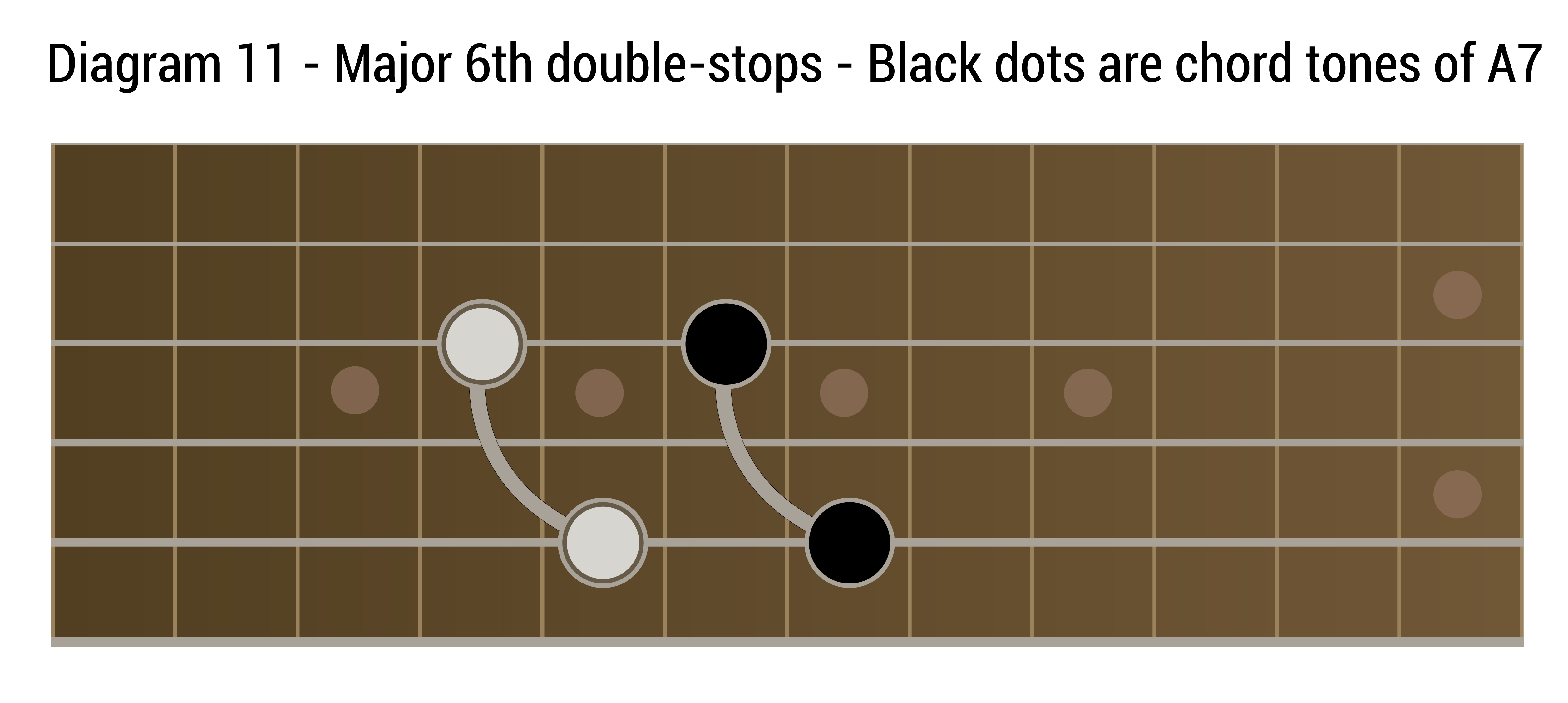
Diagram 11 – These double-stop fragments are Major 6th shapes. I suggest using your 3rd finger for the lowest tone in the shape and your 2nd finger for the highest. As with the last examples, start by picking the lowest tone (open dot) and slide up 2 frets then pick the higher tone and slide the shape back down to the original position while both notes ring out. The chord tones are indicated by the black dots, so remember those are your resolution points.
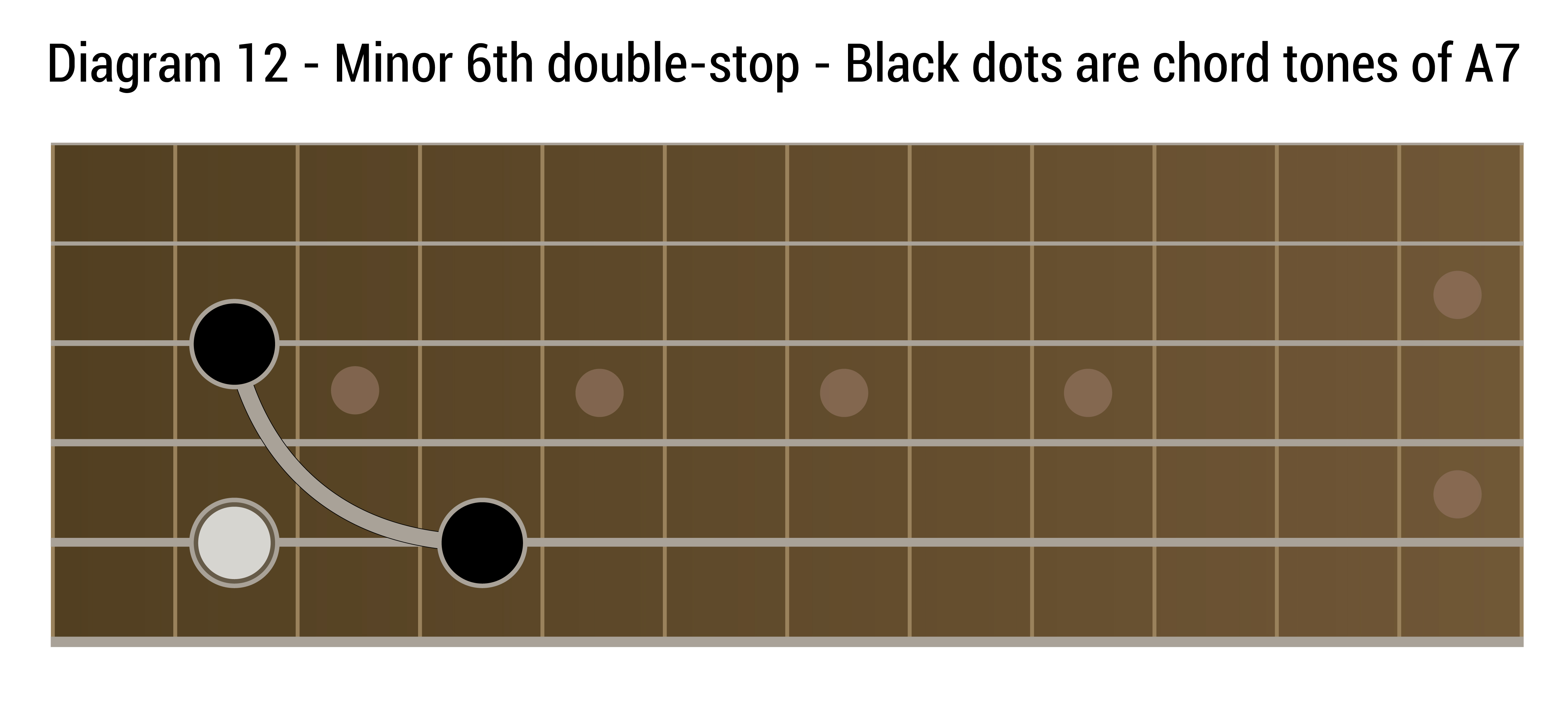
Diagram 12 – This extended shape is a minor 6th double-stop. I suggest articulating this shape with your 3rd finger on the C# note and your 1st finger playing the A note at the second fret, 3rd string. Try sliding from the low B note up to the C#, then play the high A note and then pull that off to play an open G note. To conclude the sequence play the A Major chord indicated in Diagram 13. The sequence of Major and Minor 6ths we’ve just played through can now be put together as a run of double-stops. Try playing each phrase in concession using an eighth note rhythmic pulse. I think you’ll like it!
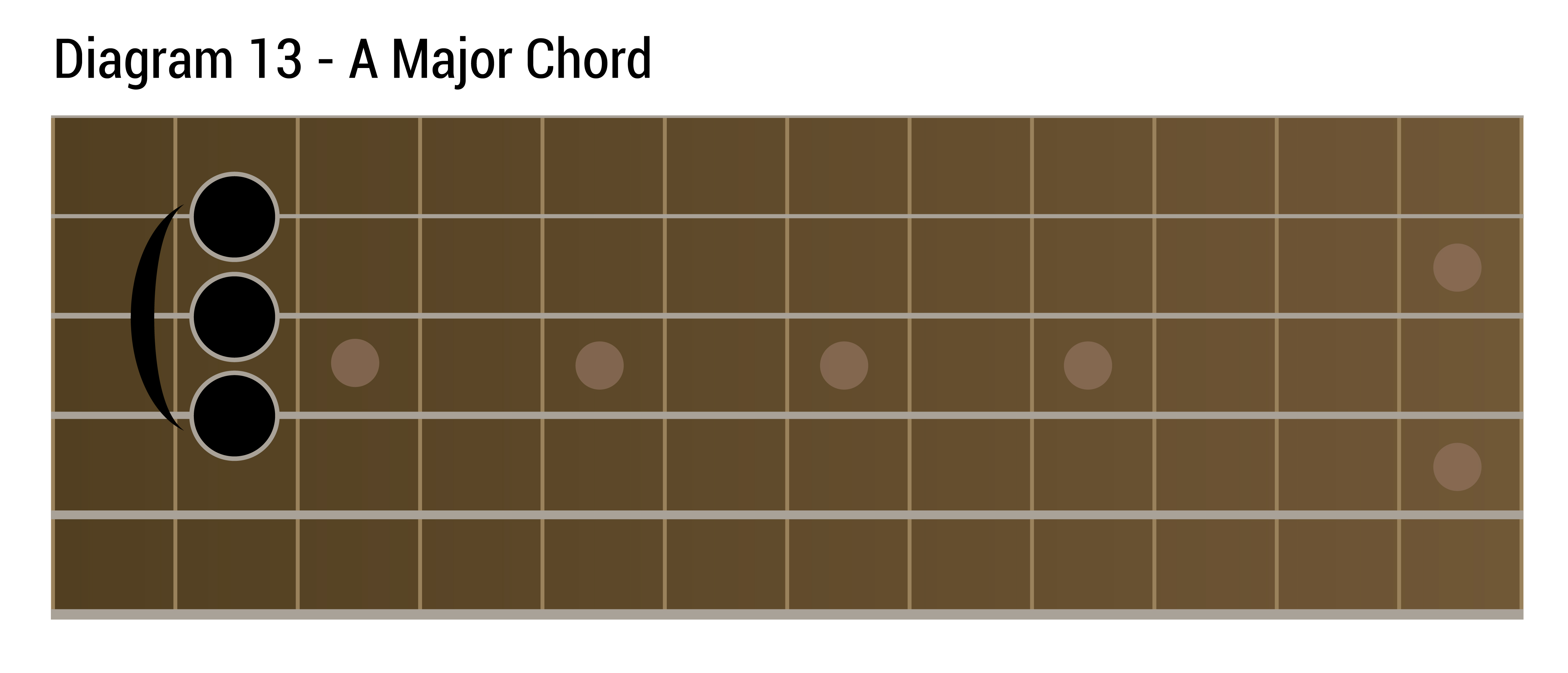
Conclusion
I hope you’ve enjoyed finding out more about double stops. Of course we are only scratching the surface here with a few flavors. If you would like a comprehensive study of all of the consonant double stops, including the theory and musical applications with great tracks to jam over then pick up a copy of Double Stop Chops and immerse yourself in all the wonderful tones available.


